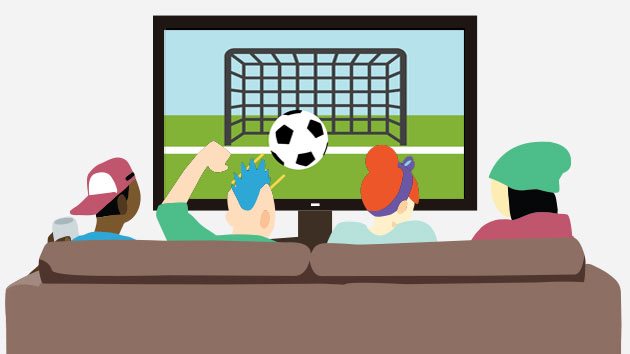U.S. Faces Tough Task as World Cup Qualifiers Resume

Qualification for the 2018 World Cup in Russia resumes this week. In CONCACAF, the FIFA division that encompasses North America, Central America and the Caribbean, the United States is one of six nations to have advanced to the final round of qualifiers, known as the Hexagonal.
The Hexagonal With the semi-ironic nickname, “The Hex,” the Hexagonal round will see the United States Men’s National Team play a total of 10 matches; a home and an away leg against the other five teams remaining in contention. At the Hexagonal round’s conclusion, the top three teams will automatically qualify for Russia. The fourth team will earn a playoff spot against the fifth-place team from Asia. The bottom two teams will not advance to the World Cup.
Along with the U.S., the other five CONCACAF teams remaining in the Hex are Costa Rica, Mexico, Panama, Honduras, and Trinidad & Tobago.
Prospects for the U.S. The Hex actually kicked off back in November and two losses in two games saw then U.S. coach Jurgen Klinsmann lose his job. The U.S. Soccer Federation brought back former coach Bruce Arena to help get the USMNT, which currently sits bottom of the CONCACAF standings, back on track for Russia 2018.
While some regard Arena as an unspectacular appointment, more of a lateral move than a forward one, the former LA Galaxy manager is hard-nosed and experienced. Arena is unlikely to make the kind of lofty pronouncements about playing inspired; attacking soccer that Klinsmann was prone to. But he knows what it takes to get the job done, having led the USMNT to back-to-back World Cups in 2002 and 2006.
The U.S. Roster The good news for U.S. fans is that despite the USMNT’s lowly position in the standings, the U.S. player pool is arguably better than it’s been at any time in this decade.
Arena has called up 24 players for the first round of qualifiers, against Honduras and Panama. The roster includes seasoned World Cup veterans like goalkeeper Tim Howard, midfield duo Michael Bradley and Jermaine Jones, and attackers Clint Dempsey and Jozy Altidore.
Along with this backbone of experience, Arena has called up a number of exciting young players that we’ve seen emerge since the last World Cup in Brazil three years ago. Teenage attacking sensation Christian Pulisic, who recently scored a Champions League goal for his German club Borussia Dortmund, is onboard. As is striker Bobby Wood, another young attacking talent who plies his trade in the Bundesliga. German-based center-back John Brooks, who plays his club football for Hertha Berlin, is also in the squad.
Unlike Klinsmann, Arena is not at all squeamish about relying on MLS-based talent and his squad selection reflects it. He’s included a number of exciting, young MLS stars in his squad including Seattle Sounders breakout star Jordan Morris, LA Galaxy attacker Sebastian Lletget, and Portland Timbers midfielder Darlington Nagbe.
Rounding out the squad are a number of established names like Pachuca defender Omar Gonzalez, Houston Dynamo defender DeMarcus Beasley, Philadelphia Union midfielder Alejandro Bedoya, and NY Red Bulls central midfielder Sacha Kljestan.
Will They Make It? With zero points after two matches, the USMNT has little margin for error. Honduras and Panama are teams the U.S. should be easily capable of beating, on paper anyway. But this is a team in transition that still seems to be recovering from the identity crisis it fell into towards the end of Klinsmann’s tenure.
While a recent friendly against Jamaica was the U.S. eke out a 1-0 victory, the team is still smarting from the disastrous results back in November that included a first home loss to Mexico since the 1970s, and 4-0 pounding away to Costa Rica.
With an away leg against Mexico and return engagement with Costa Rica both looming in the near future, it’s vital that the U.S. take at least three to four points from the games against Honduras and Panama before qualifiers resume in June.
